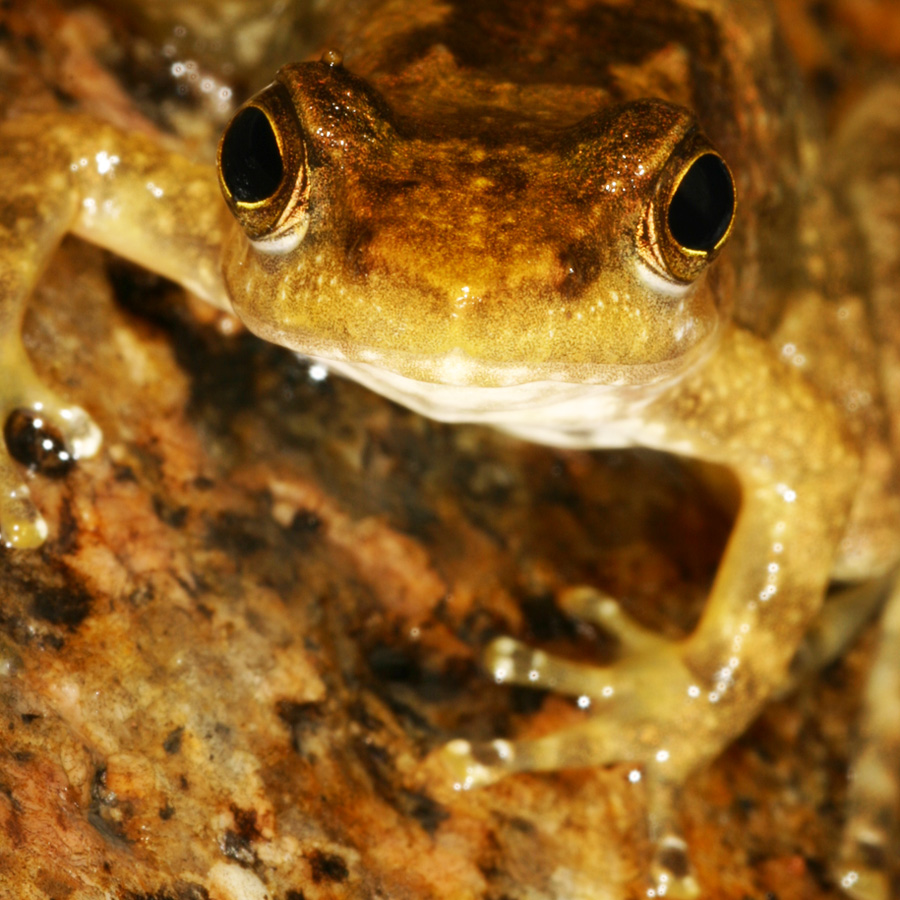Species and status overview
Found in only nine streams in the Clarke Range, the Eungella Day Frog, as its name suggests, is predominantly active during the day, though occasionally male calls can be heard at night. The call is a gentle rattling sound that is difficult to hear over the sound of rushing water.
These generally unremarkable little frogs were considered common across their range until indications of decline were recorded in the 1980’s. In May 1987 it was thought the Eungella Day Frog might have become extinct until an individual was discovered in 1992, raising hope for the species.
While the cause of the species decline is not well understood, it is thought chytrid fungus and the associated fungal disease, Chytridiomycosis, may be a contributing factor. However it is yet to be identified in frog populations in the region. Chytridiomycosis is an infectious disease affecting amphibians worldwide and chytrid fungus has caused the decline and extinction of several species related to the Eungella Day Frog .
The Eungella Day Frog has been recorded in Eungella National Park and Pelion State Forest.
Description
Ranging in size from 2-3cm, the Eungella dayfrog has a brown to yellowish-tan back, often featuring a dark irregular ‘X’, and an off-white to cream belly. The species can be found in rainforest and eucalypt forest, primarily in small creeks and streams within the splash zones of waterfalls and cascades, or on emergent rocks within the streams. A true stream-dweller, the Eungella dayfrog spends its entire life at the stream with females laying 30-50 eggs in rocks under the water. Peak breeding season is usually between January and May, although newly hatched tadpoles have been recorded in April, May and December, indicating that breeding can also occur outside this period.
The male Eungella dayfrog has a soft call but makes up for his lack of vocal ability through visual cues. Head bobbing and flicking or waving of the legs is thought to be an alternative form of communication and is sometimes even combined with some fancy hops.
Conservation concerns
Threats include:
- Limited numbers of animals in a small distribution area
- Loss of habitat from clearing of existing vegetation
- Deterioration of water quality in known population locations
- The possibility of chytrid fungus and the associated fungal disease, Chytridiomycosis
- Climate change and the long term effect of climate variability on habitat
What can I do?
- Ensure your activities in and around wetland and riparian vegetation, including farming, do not adversely affect water quality
- Decrease impact on habitat within and adjacent to streams
More Information
Photo credit: H.B. Hines
